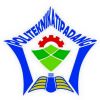PENENTUAN RASIO MOL REAKTAN OPTIMAL PADA PEMBUATAN SURFAKTAN DIETANOLAMIDA DENGAN KATALIS NATRIUM HIDROKSIDA (NaOH)
Abstract
Keywords
Full Text:
PDFReferences
Bailey, A.E. 1950. Industrial Oil and Fat Products. Interscholatic Publishing Inc. New York.
Bird, T., M. A. Nur dan M. Syahri. 1983. Kimia Fisik. Bagian Kimia. IPB.
Boocock, D.G.B., S.K. Konar, V, Mao, C. Lee dan S. Buligan. 1998. Fast Fomaation of High-Purity Methyl Esters from Vegetable Oils. J. Am. OilChem. Soc. 75 (9) : 1167-1172.
Darmoko. D dan M. Cheryan. 2000. Continous Production of Palm Methyl Ester. J. Am. Oil Chem. Soc. 77 (12) : 1269-1272.
Filder, F.J. 2001. Commercial Considerations and Markets for Naturally Derived Biodegradable Surfactants. Inform 12(12) : 11611164.
Georgiou, G., S. C. Lin dan M.M. Sharma. 1992. Surface Active Compounds from Microorganisms (Review). Bio/ Technol. 10: 60-65.
Hakim, Lukmanul. 2004. Kajian Proses Surfaktan Dietanolamida dari Asam Lemak C12 Minyak Inti Sawit (PKO). Institute Pertanian Bogor.
Herawan, T., A.R. Rakmi dan P. Guritno.1996. Pembuatan Karbohidrat Ester Sebagai Biosurfaktan secara Enzimatis. Warta PPKS , 6 (2) : 85-91.
Ketaren, S. 1986. Pengantar Teknologi Minyak dan Lemak Pangan. UI Press, Jakarta.
Koto, Z.S. 1992. Pembuatan Senyawa Epoksi Metil Ester Asam Lemak Dari Fraksi Olein Minyak Sawit. Fakultas Teknologi Pertanian. Institut Pertanian Bogor. Bogor.
Lamberti, Vincent, dkk. 1968. Process for The Preparation of Amides. United States Patent Office, New York.
Nuryanto, E., T. Haryati, dan J. Elisabet. 2002. Pembuatan Fatty Amida Dari ALSD Untuk Produksi Detergen Cair dan Shampoo. Badan Penelitian dan Pengembangan Pertanian, Departemen Pertanian.
Poeloengan, Z., L. Buana, dan Darnoko, 2000. Potensi Pengembangan Industri Hilir Kelapa Sawit di Indonesia. WARTA PPKS Medan.
Refbacks
- There are currently no refbacks.






_-_Copy1.png)
